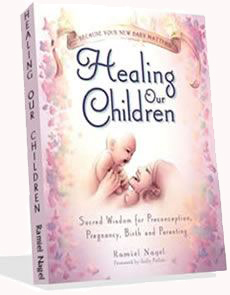Children develop hand-eye coordination long before they develop language skills. They also understand language before they can use it. These two factors combine to make signs and signals an ideal option for interacting with babies.
Many people are overwhelmed with the idea of trying to teach their tiny baby sign language. However, baby sign language is different from the standard versions used by older children and adults. Languages like ASL include their own grammar, rules, and complicated synonyms. However, baby sign language tends to be relatively straightforward. Furthermore, learning sign language, whether it be ASL based or simplified baby talk, is far easier for a baby to grasp as their brain is still developing and highly receptive.
Parents who are interested in using signs with their baby should begin early. Start with simple examples that are relevant to early childhood, such as “milk” or “teddy bear.”
Teaching a baby basic signs often provides a huge relief to new parents who are struggling to understand their baby’s needs. Baby’s can learn to sign what they are not yet able to express verbally. Such as the desire for a favorite teddy bear or a need to nurse.
Many experts believe that bridging the gap of understanding between parent and child can lead to fewer tantrums. Thereby promoting harmony within the home. Instead of getting frustrated and falling into the floor because a child cannot express their feelings into words, they can sign it. The parent should then be able to understand the sign and work toward a solution, ending or stopping a tantrum.
The idea of baby signing fits in well with the gentle approach to discipline that many attachment parent advocates tend to utilize. The reason being,

Young girls learning sign language
that it not only promotes communication and harmony, a good building block for later in life, but it also provides a gentle method of reprimand. For instance, a mother who signed “no” or “stop” to her child in public rather than saying it may save them some humility and prevent an embarrassing scene.
Few question the belief that good communication is key to childhood development. Research into baby signing shows again and again that it improves the relationship between parent and child, strengthens communication, and may aid in the development of early speech.
Adding baby signs to early childhood education can be a good segue into homeschooling as well. Parents who spend time teaching and communicating with their babies will be able to more naturally institute home learning as the child grows to school age
Teaching a baby sign language is rather simple. Parents can create their own signs or follow a guide. The signs should be simple, one or two-step symbols for a specific item or event. Babies will begin to associate the movements with the words long before they develop the linguistic fortitude necessary to carry on a conversation. Many individuals who use this technique are thrilled to find their child speaking to them through sign language long before their first birthday.
To learn more about baby signs, refer to , from authors Linda Acredolo, Susan Goodwyn, and Doug Abrams.



















